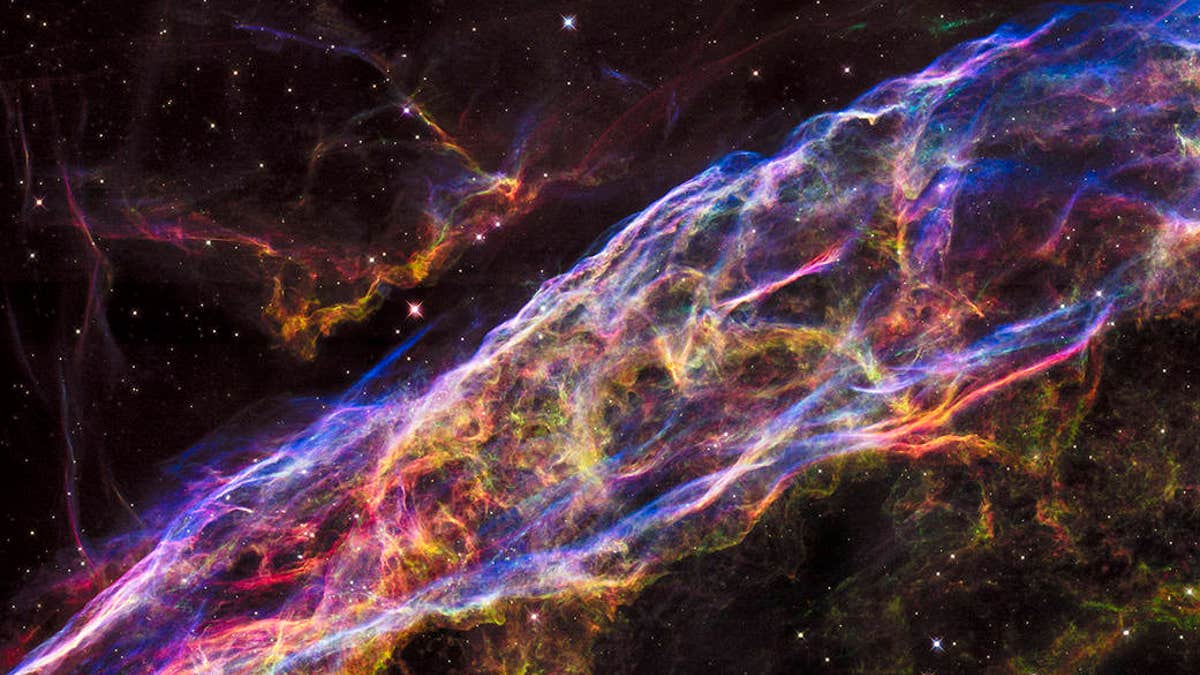
Veil Nebula. (NASA/ESA/Hubble Heritage Team)
NASA has released a stunning image of the remnants of a supernova taken by the agency’s Hubble Space Telescope.
The image reveals a small section of the expanding remains of a massive star that exploded about 8,000 years ago, according to the space agency. “Called the Veil Nebula, the debris is one of the best-known supernova remnants, deriving its name from its delicate, draped filamentary structures,” it said, in a statement. “The entire nebula is 110 light-years across, covering six full moons on the sky as seen from Earth, and resides about 2,100 light-years away in the constellation Cygnus, the Swan.”
Related: What you need to know about Sunday's rare supermoon eclipse
The view is made up of six Hubble pictures of an area roughly two light-years across.
“This close-up look unveils wisps of gas, which are all that remain of what was once a star 20 times more massive than our sun,” said NASA. “The fast-moving blast wave from the ancient explosion is plowing into a wall of cool, denser interstellar gas, emitting light. The nebula lies along the edge of a large bubble of low-density gas that was blown into space by the dying star prior to its self-detonation.”
Related: The best of Hubble: NASA marks telescope's 25th anniversary
NASA launched the Hubble Space Telescope on April 24 1990 aboard the shuttle Discovery. The agency partners with the European Space Agency on the project, with NASA’s Goddard Space Flight Center in Greenbelt, Maryland managing the telescope. The Space Telescope Science Institute (STScI) in Baltimore, which is operated for NASA by the Association of Universities for Research in Astronomy, conducts Hubble science operations.
